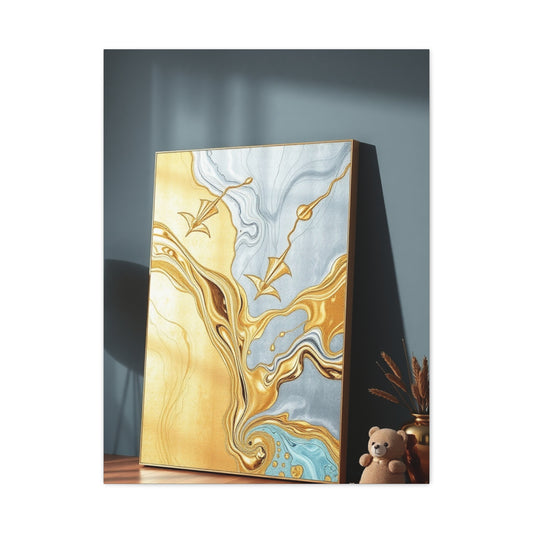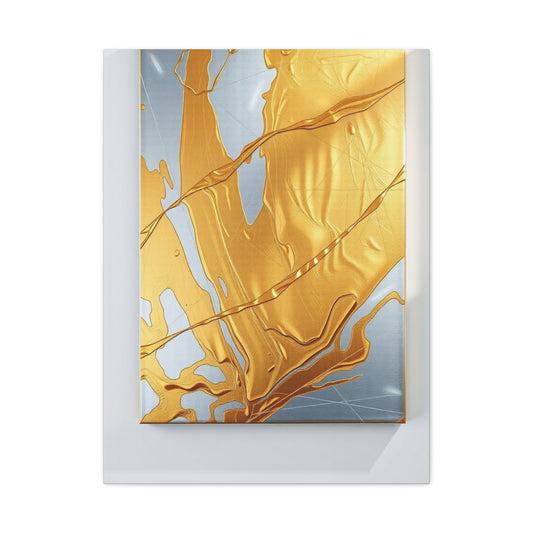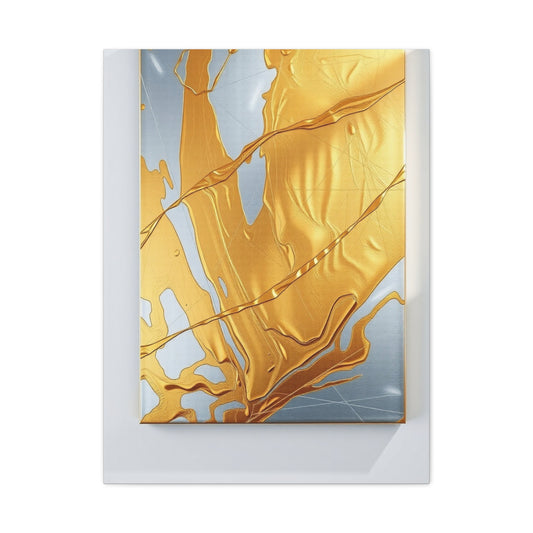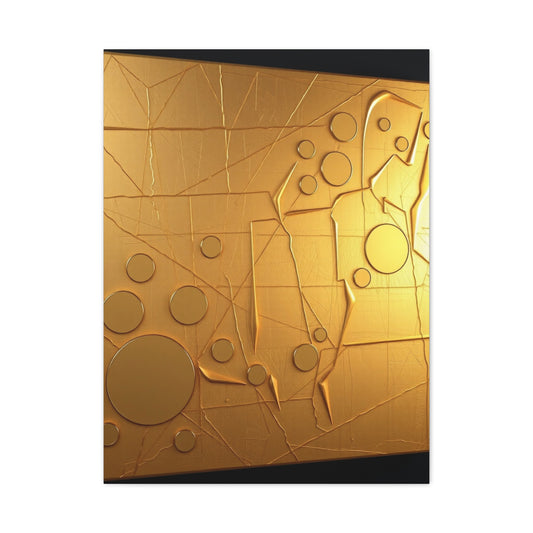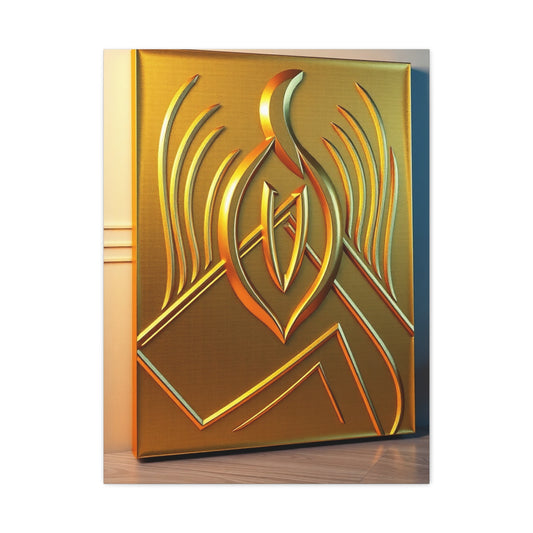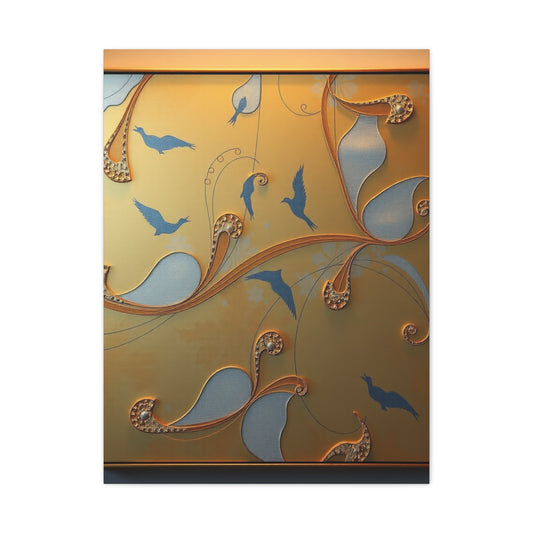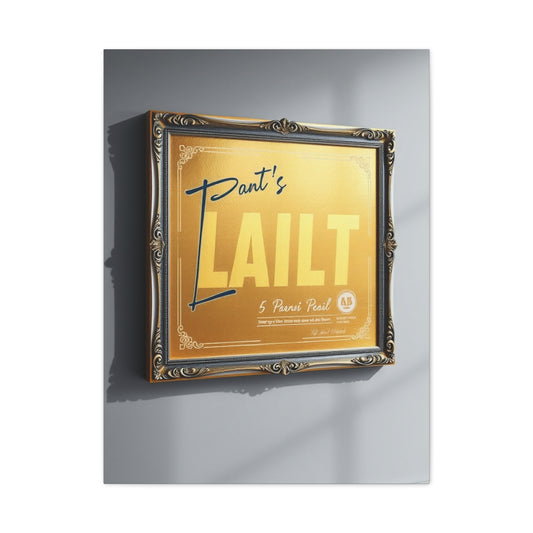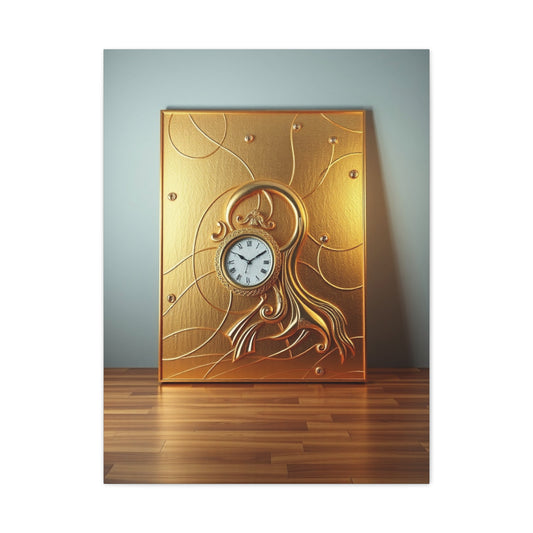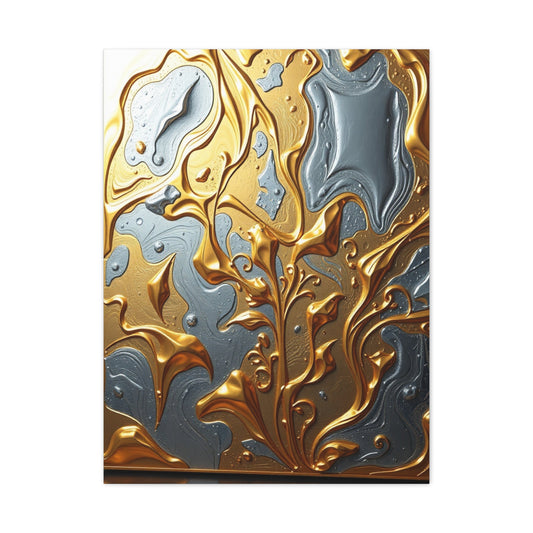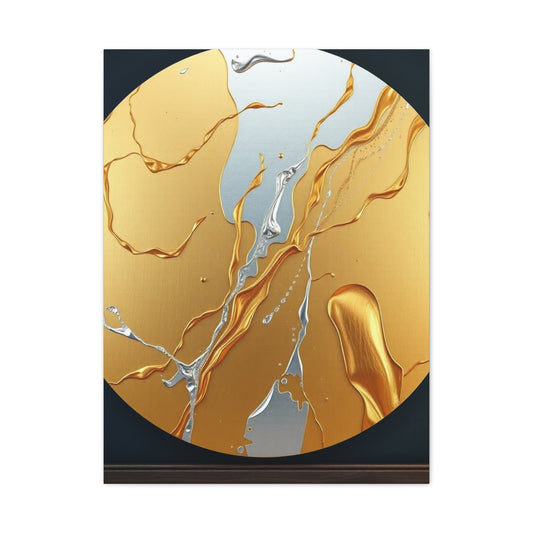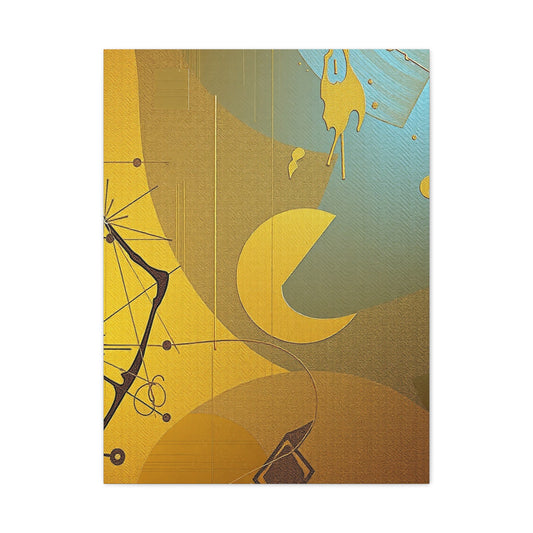Gold and Silver Wall Art for Modern and Classic Interiors
The interplay of gold and silver in interior spaces is a sophisticated design approach that has withstood the test of time. These metallic accents are not merely decorative; they have the power to alter the ambiance of a room, infusing it with elegance, radiance, and a subtle grandeur. Incorporating gold and silver wall decor into your living environment can elevate ordinary spaces into visually captivating sanctuaries that reflect both taste and personality.
Gold and silver tones offer a unique opportunity to harmonize a room’s color palette while simultaneously creating visual focal points. Gold, with its warm luminescence, evokes opulence, richness, and a sense of comfort. Silver, on the other hand, introduces a cooler, reflective quality that can modernize a room while maintaining an understated elegance. The duality of these metals allows for a versatile range of interior aesthetics, from contemporary minimalism to classical refinement.
Understanding the Role of Metallic Accents
Metallic accents, particularly gold and silver wall decor, function as more than mere embellishments. They manipulate light, add depth, and create a dynamic interplay between surfaces and textures. Reflective surfaces, such as polished gold frames or mirrored silver panels, can amplify natural light, making smaller rooms appear more expansive and airy. Conversely, matte or brushed finishes introduce a subtle sophistication that avoids overwhelming the senses, creating a balanced aesthetic that feels both intentional and organic.
In interior design, the thoughtful placement of metallic elements can dramatically alter perception. A gold-framed artwork positioned strategically across from a light source can glow, attracting attention and drawing the eye to key features within a room. Similarly, silver wall hangings with a subdued sheen can introduce an ethereal quality, softly reflecting ambient light while harmonizing with surrounding colors. The nuanced interplay of these metallic tones enriches a space in ways that simple paint or fabric alone cannot achieve.
Harmonizing Gold and Silver with Color Palettes
Integrating gold and silver wall decor requires a keen understanding of color theory and spatial dynamics. Gold naturally complements warmer tones, such as deep terracotta, rich mahogany, and soft ivory. Its warmth enhances the cozy, inviting nature of a space, making it ideal for living rooms, dining areas, or intimate reading nooks. Gold’s reflective properties also pair beautifully with muted jewel tones, adding depth and a regal vibrancy that feels effortlessly luxurious.
Silver, by contrast, resonates with cooler hues. Shades like slate gray, navy blue, and soft lavender interact elegantly with silver wall decor, producing a crisp, contemporary ambiance. The metallic sheen introduces a subtle luminescence that enlivens muted or monochromatic schemes, ensuring that walls, furnishings, and decorative elements coexist harmoniously. When combined thoughtfully, gold and silver can be layered in a single space without discord, providing a sophisticated metallic interplay that is visually compelling.
Exploring Textures and Finishes
Texture plays a critical role in maximizing the visual impact of metallic wall decor. A high-gloss gold finish exudes opulence and glamour, making it ideal for statement pieces such as ornate mirrors, intricate wall art, or sculptural frames. This type of finish reflects light dramatically, creating a focal point that commands attention. By contrast, matte or brushed metallics convey a subtler elegance. These finishes are particularly effective for larger wall areas, as they provide sophistication without overwhelming the room’s overall design.
Silver finishes offer a similar range of textural possibilities. Polished silver accents, such as mirrors or sculptural installations, impart a luminous, almost ethereal quality to a space. Meanwhile, hammered or brushed silver panels introduce tactile interest, producing visual depth and shadow play that enrich the room’s aesthetic fabric. Combining different textures—such as pairing a glossy gold mirror with a matte silver frame—can generate a layered, multidimensional effect that engages the eye and elevates the sophistication of the design.
Strategic Placement of Gold and Silver Elements
The placement of gold and silver wall decor is paramount to achieving a balanced, harmonious environment. Gallery walls, for example, provide a structured yet dynamic platform for metallic frames and art pieces. Arranging gold and silver frames in an asymmetrical pattern can introduce visual rhythm, while a symmetrical configuration promotes a more formal, classical aesthetic. Selecting artworks or photographs that echo the metallic tones can reinforce cohesion and create a sense of intentionality in the design.
Accent mirrors are another effective way to integrate metallic decor. A gold-framed mirror positioned above a console table or mantelpiece can serve as a radiant focal point, reflecting ambient light and enhancing the spatial perception of the room. Silver mirrors, whether sleek and modern or intricately patterned, provide a reflective surface that harmonizes with cooler palettes and adds subtle sophistication. Thoughtful placement ensures that these pieces do not compete with other elements but rather complement and elevate the overall design.
The Psychology of Metallic Tones
Gold and silver do more than decorate; they influence mood and perception. Gold evokes warmth, optimism, and a sense of abundance, making it suitable for spaces where comfort and conviviality are desired. Its luminous quality can uplift interiors, creating a welcoming and vibrant atmosphere. Silver, conversely, promotes calm, clarity, and modernity. Its reflective properties encourage openness and light, which can reduce visual heaviness and foster a sense of spaciousness.
By combining these tones strategically, designers can cultivate an environment that balances warmth and coolness, vibrancy and serenity. The duality of gold and silver provides a layered sensory experience, subtly influencing how a space is perceived and how inhabitants interact with it.
Integrating Gold and Silver with Different Styles
Gold and silver wall decor is remarkably versatile, capable of complementing a diverse array of design styles. In modern minimalist interiors, metallic accents provide just enough visual interest to prevent spaces from appearing stark or austere. A silver geometric wall sculpture or a gold-framed abstract artwork can punctuate a minimalist environment with elegance without disrupting its clean lines.
In classic or traditional interiors, gold often takes center stage. Ornate frames, gilded mirrors, and metallic wall panels can reinforce a sense of timeless sophistication, harmonizing with antique furniture, plush textiles, and intricate moldings. Silver, when incorporated thoughtfully, can modernize traditional spaces, introducing a contemporary twist while maintaining the room’s heritage charm.
Eclectic interiors also benefit from the interplay of gold and silver. Mixing finishes, textures, and metallic tones in unexpected ways adds depth and visual intrigue, allowing personal expression to shine. The key lies in balance: distributing metallic elements evenly, maintaining cohesion in color and finish, and ensuring that no single element overwhelms the overall composition.
Practical Tips for Maintaining Metallic Wall Decor
Preserving the brilliance of gold and silver wall decor requires careful attention. Polished surfaces, while striking, are prone to fingerprints and dust accumulation. Regular, gentle cleaning with a soft, lint-free cloth helps maintain their luster. Avoid harsh chemicals that may tarnish or damage metallic finishes, especially on delicate gold leaf or brushed silver surfaces.
Matte or textured finishes demand less frequent maintenance but still benefit from periodic dusting to prevent dulling over time. When hanging metallic wall decor, ensure that fixtures and supports are secure, particularly for heavier pieces such as mirrors or sculptural panels. Proper installation not only guarantees safety but also preserves the integrity of the artwork or decorative element.
The Enduring Appeal of Gold and Silver
Gold and silver wall decor remains a perennial choice for interior design because of its inherent adaptability and timeless allure. These metallic tones transcend fleeting trends, offering both warmth and coolness, opulence and subtlety, in an effortlessly harmonious manner. Their ability to reflect light, introduce texture, and create focal points ensures that interiors feel alive and inviting, even when other design elements are understated.
By understanding the nuances of metallic finishes, color palettes, textures, and placement, homeowners and designers alike can harness the transformative power of gold and silver. Whether used sparingly as accent pieces or boldly as statement features, these metals provide an unmatched combination of elegance, sophistication, and visual intrigue.
The integration of gold and silver wall decor is not merely decorative; it is a deliberate exercise in artistry, perception, and spatial enhancement. When approached thoughtfully, it transforms walls into canvases that captivate, enrich, and elevate the overall ambiance of any living space.
Creative Approaches to Gold and Silver Wall Decor
Incorporating gold and silver wall decor into interiors offers endless creative possibilities. These metallic accents act as more than decorative touches; they provide opportunities to infuse personality, depth, and artistic flair into a room. By considering composition, contrast, and the interplay of materials, spaces can transform into captivating environments that feel both luxurious and thoughtfully curated.
Gold and silver, when thoughtfully integrated, can create layers of visual interest. Using multiple metallic elements together—such as a gold-framed mirror alongside silver wall sconces—introduces a sophisticated tension that elevates the overall design. The subtle juxtaposition of warm and cool tones produces an interplay that is visually stimulating without being ostentatious. Mixing finishes, including polished, matte, and hammered textures, further enriches the aesthetic and prevents monotony.
Designing Gallery Walls with Metallic Accents
Gallery walls provide an exceptional platform for displaying a curated collection of gold and silver pieces. These walls can blend framed artwork, photographs, and decorative objects into a cohesive ensemble. Incorporating metallic tones into a gallery wall creates both depth and luminosity, ensuring that each element contributes to the overall composition rather than fading into the background.
To achieve harmony, it is crucial to balance gold and silver pieces proportionally. For instance, an arrangement might feature alternating gold and silver frames, interspersed with neutral or muted artwork. This method allows the metallic tones to punctuate the gallery without overwhelming it. Textural variation also enhances the effect—a glossy gold frame paired with a brushed silver panel introduces subtle complexity and visual intrigue.
Selecting artwork that complements the metallic palette can amplify the sophistication of the display. Abstract pieces with hints of gold or silver, botanical prints accented with metallic leaf, or even minimalist black-and-white photographs framed in gold or silver can all contribute to a layered and cohesive gallery wall. The key is to maintain rhythm, ensuring that each piece resonates with the others while allowing individual elements to shine.
Accent Mirrors as Statement Pieces
Mirrors framed in gold or silver serve dual purposes in interior design: functional reflection and aesthetic amplification. These pieces act as focal points, reflecting both light and the surrounding decor to create a sense of spatial expansiveness. In smaller rooms, strategically placed mirrors can trick the eye into perceiving greater depth, while in larger spaces, they contribute elegance and refinement.
Gold-framed mirrors often evoke a sense of grandeur. Ornate detailing, such as filigree, geometric patterns, or gilded textures, adds drama and opulence to entryways, living rooms, or dining areas. Silver mirrors, in contrast, convey subtle modernity and sophistication. Sleek, minimalist frames in silver lend themselves well to contemporary, Scandinavian, or industrial-inspired interiors.
The placement of metallic mirrors requires thoughtful consideration of light sources. Positioning a gold-framed mirror across from a window maximizes natural illumination, highlighting its warm tones and reflecting sunlight throughout the room. Silver mirrors, when placed near cooler lighting or alongside gray or blue walls, create a refined shimmer that enhances the room’s ambiance without appearing overpowering.
Integrating Metallic Accents in Various Spaces
Gold and silver wall decor can enhance virtually any room, each environment benefiting from a distinct approach tailored to its function and mood. In living rooms, metallic accents establish a sense of sophistication while providing visual points of interest. Gold or silver-framed artwork, mirrors, and wall sculptures can coexist harmoniously with furniture and textiles, creating an elegant and inviting atmosphere.
Bedrooms benefit from metallic accents that introduce subtle glamour and tranquility. Gold wall hangings or decorative panels behind the bed can act as a luxurious backdrop, while silver elements, such as bedside mirrors or wall sconces, contribute a calm, reflective quality. The combination of warm and cool metallic tones allows for balance, ensuring the space feels both indulgent and serene.
In home offices, metallic accents serve a functional and aesthetic purpose. Silver wall-mounted shelves or organizers can add a contemporary flair, while gold-accented frames or artwork inject warmth and personality. By integrating metallic elements into spaces used for productivity, the decor not only enhances style but also subtly influences mood and focus.
The Role of Lighting in Metallic Decor
Lighting dramatically impacts the perception of gold and silver wall decor. Metallic surfaces interact with light in unique ways, reflecting, amplifying, and diffusing it to produce dynamic effects. Layered lighting—including ambient, task, and accent illumination—can enhance the luster of metallic accents, emphasizing textures and tonal contrasts.
Gold finishes benefit from warm lighting, such as soft incandescent or warm LED bulbs, which intensify their natural glow. Silver finishes, conversely, respond well to cooler light sources, such as daylight-balanced LEDs or halogen bulbs, which enhance their reflective, crisp quality. By tailoring lighting to the metallic elements, interiors gain dimensionality and visual interest, making even modest spaces feel expansive and vibrant.
In addition to overhead lighting, consider accent lights to highlight metallic wall decor. Spotlights or wall-mounted fixtures can create dramatic shadows, emphasizing texture and depth. Recessed lighting above a gallery wall or a strategically positioned floor lamp near metallic mirrors can amplify the reflective qualities of gold and silver, enriching the room’s visual complexity.
Combining Metals with Other Materials
Gold and silver wall decor harmonize beautifully with a variety of other materials, offering opportunities for eclectic yet cohesive design. Wood, for instance, complements metallic tones by introducing warmth, texture, and natural grain. A gold-framed artwork mounted on a deep walnut wall or a silver mirror paired with light oak paneling creates a balanced interplay between organic and metallic elements.
Glass and crystal surfaces further enhance the reflective qualities of metallic accents. Crystal wall sconces or glass shelving with metallic trims amplify luminosity and sophistication. Textiles, such as velvet, silk, or linen, can soften metallic surfaces while adding tactile richness. Coordinating pillow covers, curtains, or rugs with metallic motifs can reinforce cohesion and create a layered, harmonious environment.
Stone and marble surfaces also pair elegantly with gold and silver decor. Marble walls or tabletops, particularly those with subtle veining, provide a neutral yet luxurious backdrop for metallic accents. Gold or silver frames, sculptures, or panels on a marble surface evoke timeless refinement, bridging classic and contemporary styles seamlessly.
Embracing Unconventional Metallic Decor
Beyond conventional frames and mirrors, gold and silver wall decor can encompass more unusual or avant-garde elements. Sculptural panels, mixed-media wall art, and three-dimensional metallic installations offer unexpected texture and depth. These pieces engage the senses in a way flat artwork cannot, adding tactile richness and sculptural interest to the wall.
Incorporating metallic wall tiles or embossed panels can create an immersive environment, particularly in feature walls or focal areas. Gold or silver leaf applications, whether subtle or expansive, introduce a handcrafted element that elevates the aesthetic sophistication of a space. By experimenting with unconventional metallic decor, interiors gain a unique character that reflects personal taste while adhering to timeless design principles.
Maintaining Metallic Wall Decor
Preserving the brilliance of gold and silver wall decor is essential to sustaining its impact over time. Dusting polished surfaces regularly with a soft, dry cloth prevents dulling and maintains reflectivity. Matte or textured finishes require less frequent attention but benefit from periodic cleaning to preserve their subtle elegance.
Avoid abrasive cleaning agents that can scratch or tarnish metallic surfaces. For intricate details, such as ornate frames or sculptural panels, a soft brush can remove accumulated dust without damaging the finish. Proper installation is equally important—secure wall anchors, brackets, or supports ensure that heavier metallic pieces remain safely in place while maintaining their intended visual alignment.
Gold and Silver in Contemporary Design
In contemporary interiors, metallic accents provide a bridge between minimalism and luxury. Silver wall decor, with its sleek, reflective quality, complements modern lines, neutral palettes, and open-plan spaces. Gold, when used judiciously, injects warmth and opulence without disrupting the understated elegance that defines contemporary design.
Pairing metallic accents with minimalist furniture, geometric patterns, and restrained color schemes ensures a balanced composition. A gold-framed abstract artwork, for example, can punctuate a monochromatic living room, drawing attention without overwhelming the space. Similarly, silver wall sculptures or panels can add dimensionality and subtle glamour, enhancing a room’s visual intrigue.
Thematic Designs with Gold and Silver Wall Decor
Creating a cohesive interior often begins with a thematic approach. Gold and silver wall decor provides remarkable flexibility in this regard, seamlessly aligning with various thematic styles while adding sophistication, depth, and a luminous quality. From contemporary chic to classic elegance, metallic accents can serve as central motifs around which a room’s aesthetic is built.
One popular thematic approach is the modern minimalist theme. In such spaces, silver wall decor excels due to its reflective and understated qualities. Sleek silver frames, mirrors, or geometric wall panels integrate smoothly with minimal furniture and monochromatic color schemes. Metallic accents introduce visual interest and subtle luxury without disrupting the overall simplicity, creating a serene yet sophisticated environment.
Conversely, gold is often favored in traditional or classical themes. Ornate frames, gilded mirrors, and wall panels with intricate detailing emphasize opulence, richness, and timeless appeal. Such decor complements deep wood tones, plush fabrics, and architectural elements like crown molding or wainscoting. The warm, radiant glow of gold provides a sense of comfort and grandeur that resonates with classical design principles.
Eclectic and transitional themes benefit greatly from combining gold and silver elements. In these spaces, metallic decor serves as a unifying factor, bridging diverse furniture styles, color palettes, and textures. The interplay between the warm allure of gold and the cool sophistication of silver can anchor eclectic compositions, creating a visually harmonious yet dynamic aesthetic.
Room-Specific Strategies for Metallic Accents
The application of gold and silver wall decor varies significantly depending on the room’s function, size, and lighting. In living rooms, metallic accents can define focal points, create depth, and introduce layers of sophistication. Large gold-framed mirrors above mantelpieces or silver wall sculptures near seating areas not only enhance visual interest but also reflect light, making spaces feel more expansive.
Dining areas benefit from the luminous qualities of metallic decor, where gold or silver elements can amplify ambiance and elevate the sense of occasion. Mirrors with metallic frames or subtle metallic wall panels behind dining tables can enhance both natural and artificial lighting, creating a radiant, inviting environment. Pairing metallic accents with warm textiles, such as velvet cushions or silk table runners, further enhances the luxurious atmosphere.
Bedrooms, by contrast, often require a more delicate approach. Gold wall panels or framed artwork behind the bed can serve as luxurious backdrops, while silver sconces or mirrors on side walls introduce a serene, reflective quality. The combination of gold and silver allows for balanced warmth and coolness, fostering an atmosphere that is both indulgent and calming—essential for restful spaces.
Home offices present another opportunity to leverage metallic accents strategically. Silver wall-mounted shelves or minimalist metallic frames maintain a professional, contemporary look, while subtle gold touches, such as artwork or decorative hardware, add personality and warmth. These accents can influence mood, increase visual interest, and promote a productive yet inspiring workspace.
Layering Textures with Metallic Decor
Texture is a crucial element when incorporating gold and silver wall decor. Metallic surfaces interact with light in nuanced ways, and layering textures enhances both depth and visual intrigue. Polished finishes, for example, reflect light dramatically, making them ideal for statement pieces like ornate mirrors or sculptural wall art. Brushed or matte finishes, in contrast, offer subdued elegance and balance, particularly when covering larger wall areas.
Combining metallic textures with other materials such as wood, stone, or fabric can elevate design complexity. A gold-framed mirror against a textured stone wall, for instance, produces a tactile contrast that feels organic yet sophisticated. Silver panels juxtaposed with matte wood shelves or glass elements create dimensionality and emphasize the reflective qualities of metallic surfaces. Layering textures ensures that metallic accents feel integrated and intentional rather than decorative afterthoughts.
Harmonizing Metallic Accents with Color
Color coordination is pivotal when integrating gold and silver into interior design. Gold naturally complements warmer tones such as terracotta, deep ochre, and creamy neutrals, creating a cozy, inviting atmosphere. Silver, on the other hand, resonates with cooler hues like slate gray, navy blue, and soft lavender, contributing a crisp, modern aesthetic.
For balanced compositions, consider alternating gold and silver accents in complementary positions throughout the room. This prevents dominance by a single metallic tone and encourages a visual rhythm. Incorporating subtle metallic hints within textiles or accessories, such as gold-threaded cushions or silver-accented rugs, reinforces cohesion without overwhelming the space. This layered approach ensures that metallic wall decor feels harmonious with the room’s overall palette.
Advanced Techniques for Metallic Wall Decor
To maximize the impact of gold and silver wall decor, advanced design techniques can be employed. One approach involves using metallic leafing or gilding. Applying thin sheets of gold or silver leaf to a wall panel or frame produces a handcrafted, luxurious finish that enhances depth and luminosity. These details catch light differently throughout the day, creating a dynamic, living surface that continuously evolves with its environment.
Three-dimensional metallic art provides another advanced option. Sculptural wall panels, mixed-media installations, and embossed metallic tiles introduce both visual and tactile interest. These elements encourage interaction, inviting viewers to explore surfaces, angles, and shadows. The three-dimensionality enhances the perception of depth, particularly in smaller rooms, where flat decor might otherwise appear static or limited.
Reflective metallic surfaces also respond dramatically to layered lighting. Strategically placed spotlights or recessed fixtures can highlight textures, amplify reflections, and create captivating visual rhythms. Light bouncing off a gold-framed mirror or a silver wall panel adds luminosity and energy to the room. Understanding how metallic surfaces interact with different lighting conditions allows designers to manipulate ambiance effectively, enhancing both mood and spatial perception.
Mixing Metals Without Overpowering the Space
Successfully combining gold and silver requires careful consideration of balance and proportion. One effective strategy is to designate a primary metal and use the other as an accent. For instance, a room may feature predominantly gold-framed mirrors and wall art, complemented by silver fixtures or smaller decorative elements. This approach maintains cohesion while still showcasing both metallic tones.
Texture, finish, and placement further mediate the balance. Polished and matte finishes can coexist, provided they are distributed evenly throughout the space. Metallic decor should be spaced thoughtfully to prevent clustering, which can create visual chaos. By attending to these details, interiors achieve a harmonious blend of warmth and coolness, resulting in a sophisticated and visually dynamic environment.
Incorporating Metallic Decor into Feature Walls
Feature walls are an ideal canvas for gold and silver wall decor. These walls can highlight a particular design element, draw attention to architectural features, or create a thematic focal point. Gold panels or metallic murals behind a sofa or bed produce a luxurious backdrop, while silver geometric sculptures or reflective installations add contemporary refinement.
Integrating multiple metallic elements on a feature wall encourages layered visual storytelling. Alternating textures, finishes, and shapes creates depth and intrigue, ensuring the wall captures attention without dominating the room. Additional elements, such as subtle lighting or complementary wall colors, further enhance the feature wall’s impact, creating a space that feels curated and intentional.
Balancing Functionality with Aesthetic Appeal
Metallic wall decor can serve both functional and decorative purposes. Mirrors, for example, reflect light and expand spatial perception while also acting as elegant focal points. Wall-mounted metallic shelves provide storage solutions while contributing to the room’s visual sophistication. Clocks, hooks, and organizational panels with gold or silver finishes combine practicality with artistry, integrating seamlessly into modern living.
When selecting metallic decor, it is important to ensure that functionality does not compromise aesthetic appeal. Heavy mirrors or panels should be installed securely to prevent accidents, while smaller elements like shelves and hooks should support both weight and style. By balancing utility and design, metallic decor enriches both the visual and practical qualities of the room.
Embracing Eclectic and Transitional Styles
Gold and silver wall decor is particularly effective in eclectic or transitional interiors. Eclectic design thrives on contrast, variation, and unexpected combinations, and metallic accents serve as unifying elements that anchor diverse furniture styles, textures, and colors. Gold and silver can provide rhythm, continuity, and a touch of luxury, preventing the eclectic mix from appearing chaotic.
Transitional design, which blends traditional and contemporary elements, also benefits from metallic accents. Gold introduces warmth and classical elegance, while silver provides modernity and clarity. Together, they bridge stylistic boundaries, creating spaces that feel balanced, harmonious, and visually engaging.
Maintenance and Longevity of Metallic Decor
Proper care ensures that gold and silver wall decor maintains its visual appeal over time. Polished surfaces are prone to fingerprints and dust accumulation, while matte finishes require periodic dusting to preserve their subtle charm. Soft, lint-free cloths and gentle cleaning agents are recommended to avoid damaging finishes.
For ornate or sculptural pieces, a soft brush can remove dust from intricate details without compromising texture or color. Regular inspection of mounting hardware and supports ensures that heavier metallic pieces remain secure. Attention to care and placement extends the lifespan of metallic decor, preserving both its functional and aesthetic qualities.
The Enduring Influence of Gold and Silver in Interior Design
Gold and silver wall decor continues to resonate with designers and homeowners because of its inherent adaptability and timeless appeal. These metallic accents transcend transient trends, offering warmth, coolness, luminosity, and sophistication in a variety of contexts. Their ability to reflect light, introduce texture, and anchor thematic designs ensures that interiors feel both inviting and meticulously curated.
By exploring thematic approaches, room-specific strategies, texture layering, and advanced techniques, gold and silver decor can transform ordinary walls into captivating compositions. The interplay of metallic tones, when thoughtfully balanced, elevates interiors, making them visually stimulating, harmonious, and enduringly elegant.
Seasonal Styling with Gold and Silver Wall Decor
Metallic wall decor provides a versatile foundation for seasonal interior styling. Gold and silver elements respond well to the changing moods of different seasons, allowing spaces to feel fresh, vibrant, or cozy throughout the year. By thoughtfully adjusting surrounding decor, lighting, and accents, interiors can evolve organically while maintaining a consistent sense of sophistication and elegance.
During the spring and summer months, silver wall decor shines in bright, airy interiors. Silver-framed mirrors or wall panels reflect natural light, enhancing the perception of space and producing a crisp, rejuvenating atmosphere. Pairing metallic accents with pastel tones, soft florals, or light linen fabrics reinforces the season’s delicate and uplifting aesthetic. Subtle gold highlights in small decorative objects, such as picture frames or sconces, introduce warmth without disrupting the cool, luminous palette of summer interiors.
In contrast, autumn and winter call for the warmth and radiance of gold. Gold wall accents, from gilded frames to textured panels, evoke a sense of intimacy and comfort, complementing rich, earthy tones and layered textiles. Deep oranges, burgundies, and forest greens harmonize with gold decor to create a cocoon-like ambiance ideal for colder months. Strategic lighting—such as warm LED or incandescent bulbs—enhances the metallic glow, producing spaces that feel inviting, elegant, and seasonally appropriate.
Mixing gold and silver across seasons requires careful attention to balance and proportion. During spring and summer, silver may dominate with gold as subtle accents, while in autumn and winter, gold can take precedence, tempered by cool silver elements for contrast. This seasonal modulation ensures interiors remain dynamic and visually engaging while retaining a cohesive metallic theme.
Integrating Patterns with Metallic Decor
Patterns play a crucial role in complementing gold and silver wall decor. Geometric shapes, florals, abstract designs, and textured motifs interact with metallic surfaces to enhance depth, rhythm, and visual interest. Incorporating patterned wallpaper, fabric, or stenciled designs behind metallic panels or frames creates a multidimensional effect that elevates the sophistication of the space.
For example, a silver geometric wall sculpture against a subtly patterned gray wall produces a contemporary, layered aesthetic. Similarly, a gold-framed floral artwork or wall panel against textured wallpaper can evoke classical elegance while maintaining visual complexity. Layering patterns with metallic elements allows designers to play with scale, texture, and contrast, creating interiors that are both harmonious and stimulating.
Textiles can also reinforce the relationship between pattern and metallic decor. Rugs, throw pillows, or curtains with metallic threads or complementary patterns echo wall accents, enhancing cohesion. This approach ensures that metallic elements are not isolated but woven into the broader design narrative of the room. By considering scale, proportion, and repetition, interiors achieve a balanced interplay of pattern and metallic shine.
Personalized Design Strategies
One of the most compelling aspects of gold and silver wall decor is its adaptability to personal style. Whether a homeowner favors classic, modern, eclectic, or avant-garde interiors, metallic accents can be tailored to reflect individuality while maintaining timeless elegance.
For a contemporary, minimalist approach, silver wall decor works particularly well. Polished silver panels, sleek mirrors, or abstract sculptures enhance clean lines and open spaces. Accent pieces in muted gold can be introduced sparingly to soften the room and add warmth without disrupting the minimalist aesthetic. Placement, symmetry, and finish are crucial to achieving the understated elegance characteristic of contemporary interiors.
In traditional or classic interiors, gold takes center stage. Ornate frames, gilded mirrors, and decorative wall panels emphasize grandeur, complementing antique furniture, rich textiles, and architectural detailing. Subtle silver accents can modernize the space, providing contrast and preventing an overly heavy or dated appearance. The result is a harmonious blend of opulence and refinement that feels timeless yet adaptable.
Eclectic and transitional styles benefit from a dynamic mix of metallic tones. Silver and gold can bridge contrasting furniture styles, color schemes, and textures, creating visual cohesion. By distributing metallic elements thoughtfully—through wall art, mirrors, sconces, and decorative panels—designers can anchor eclectic compositions, ensuring the space feels curated rather than chaotic. Personal touches, such as heirloom pieces, travel souvenirs, or bespoke artwork, further enhance individuality while integrating seamlessly with metallic decor.
Incorporating Metallic Decor into Small Spaces
Small rooms require careful planning when introducing gold and silver wall decor. Metallic accents can visually expand compact areas, reflecting light and creating the illusion of depth. Mirrors, in particular, are highly effective, with silver or gold frames amplifying natural light while establishing a focal point.
Gold wall panels or framed artwork can bring warmth to smaller living rooms or bedrooms, preventing interiors from feeling cold or sterile. Silver elements, such as wall-mounted shelves or sculptural pieces, introduce reflective qualities without overcrowding the space. Combining metallics strategically—ensuring that neither dominates—enhances the perception of openness while maintaining a balanced, sophisticated aesthetic.
Vertical placement of metallic elements can also elongate walls, drawing the eye upward and giving small spaces a sense of height. Arranging gold and silver accents asymmetrically adds visual interest without overwhelming the room, while evenly spaced metallic pieces create harmony and rhythm.
Coordinating with Furniture and Accessories
Metallic wall decor functions most effectively when harmonized with furniture and accessories. Gold and silver elements should complement rather than compete with existing furnishings, upholstery, and textiles. Warm wooden tones pair naturally with gold, enhancing its radiant, opulent qualities, while cooler materials like glass, steel, or gray upholstery enhance the reflective clarity of silver.
Accessories such as cushions, throws, vases, and light fixtures can echo metallic tones, reinforcing cohesion throughout the room. Subtle touches—like a gold-trimmed side table or a silver-accented lamp—can tie wall decor into the broader interior narrative. Layering metallic tones across furniture, accessories, and walls produces a polished, unified design while maintaining depth and dimension.
Focal Points and Visual Hierarchy
Creating a visual hierarchy is essential when using gold and silver wall decor. A dominant metallic element, such as an oversized mirror, gallery wall, or sculptural panel, establishes a primary focal point. Secondary metallic accents, strategically distributed, support this focal point and guide the eye through the room.
Balance is key: too many metallic elements of equal prominence can result in visual chaos, while too few can leave the space feeling underdeveloped. By designing with hierarchy in mind, interiors achieve both drama and subtlety, ensuring that gold and silver accents enhance rather than overwhelm the overall aesthetic.
Mixing Metals with Natural Materials
Integrating metallic wall decor with natural materials creates a layered and tactile environment. Wood, stone, marble, and textiles contrast beautifully with gold and silver, adding organic warmth and grounding the metallic sheen. For instance, gold frames or panels mounted on a reclaimed wood accent wall produce a rustic-luxury effect, while silver accents paired with stone or concrete surfaces introduce contemporary sophistication.
Plants and greenery can further soften metallic elements, providing a visual counterbalance to reflective surfaces. Hanging plants near gold or silver wall sculptures or placing potted greenery around metallic mirrors enhances depth and introduces life into the space. The combination of natural textures and metallic finishes ensures interiors feel inviting, dynamic, and multidimensional.
Personalized Metallic Arrangements
Customizing metallic wall decor allows homeowners to create truly unique environments. Combining bespoke artwork, hand-crafted frames, or artisan mirrors with commercially available metallic pieces produces a layered, personal aesthetic. The careful curation of gold and silver elements ensures that each piece contributes to the overall narrative, reflecting taste, personality, and lifestyle.
Experimenting with asymmetry, layered textures, and varying scales encourages a playful yet sophisticated approach to metallic decor. For example, a small silver sculpture might be paired with a large gold-framed artwork, creating visual tension and intrigue. Custom arrangements allow interiors to evolve organically, accommodating changes in taste, function, and seasonal styling.
Practical Implementation of Gold and Silver Wall Decor
Incorporating gold and silver wall decor into interiors requires a thoughtful, strategic approach to ensure balance, harmony, and lasting visual impact. Successful implementation begins with understanding the room’s dimensions, lighting, and overall design narrative. Metallic accents are versatile, yet without careful planning, they risk overpowering or cluttering a space.
Begin by identifying focal points. Large mirrors, ornate frames, or sculptural metallic panels are natural candidates to anchor the room. These elements establish a visual hierarchy, guiding the eye and providing context for secondary metallic accents. Smaller items, such as wall sconces, shelves, or decorative hooks, can complement the primary elements, creating a layered, sophisticated environment. Placement should consider sightlines, natural light sources, and the rhythm of surrounding furnishings to ensure cohesion.
When arranging multiple metallic pieces, alternating gold and silver accents introduces balance and depth. Consider using one metal predominantly, with the other as a supporting accent to prevent visual discord. Incorporating varied textures—polished, matte, brushed, or hammered—further enriches the design, providing tactile interest and subtle complexity. Thoughtful coordination ensures that metallic wall decor feels intentional and integrated rather than decorative afterthoughts.
Sourcing Quality Metallic Wall Decor
The quality of gold and silver wall decor directly impacts its visual appeal and longevity. Selecting pieces with durable finishes, precise craftsmanship, and attention to detail enhances both aesthetic value and functional integrity. High-quality metallic frames, mirrors, and sculptures retain their luster, resist tarnishing, and maintain structural stability over time.
Consider sourcing items from reputable artisans or manufacturers specializing in metallic decor. Handcrafted pieces, such as gilded frames, embossed panels, or custom sculptures, often possess unique textures and finishes that mass-produced items lack. These elements introduce individuality and character into the space, allowing interiors to feel curated and personalized.
Paying attention to the finish is equally important. Polished gold or silver surfaces reflect light vividly but may require more frequent maintenance. Brushed or matte finishes provide subtle elegance and are less prone to visible fingerprints or smudges. Evaluating the finish in relation to the room’s lighting, color scheme, and other materials ensures a cohesive and enduring aesthetic.
Placement Strategies for Maximum Impact
Effective placement is essential to achieve the full potential of gold and silver wall decor. Mirrors, for example, should be positioned to reflect natural light or key architectural features, amplifying brightness and spatial perception. Large metallic panels can anchor seating areas or dining spaces, while smaller decorative accents can punctuate walls, corners, or entryways.
Vertical arrangements of metallic elements can enhance the perception of height in rooms with lower ceilings. Similarly, horizontal placement across walls or above furniture can broaden narrow spaces, producing a sense of expansiveness. Grouping metallic pieces in clusters or arranging them asymmetrically introduces dynamic visual rhythm, while evenly spaced layouts promote balance and formality.
Layering metallic accents with complementary textures, colors, and patterns further amplifies impact. For example, gold-framed artwork atop a textured wall or silver sculptural panels against muted tones creates depth and contrast. Incorporating subtle lighting, such as spotlights or recessed fixtures, enhances the reflective qualities of metallic surfaces, enriching the ambiance and drawing attention to intricate details.
Long-Term Care and Maintenance
Preserving the beauty of gold and silver wall decor requires consistent, careful maintenance. Polished surfaces are especially susceptible to fingerprints, dust, and smudges. Regular cleaning with soft, lint-free cloths prevents dulling and maintains the reflective quality of metallic finishes. Avoid harsh chemical cleaners that may tarnish, scratch, or compromise delicate surfaces.
Matte, brushed, or textured finishes are more forgiving but still benefit from periodic dusting. For ornate frames, sculptural panels, or embossed designs, use soft brushes to remove dust from crevices without damaging intricate details. Ensuring proper installation with secure wall anchors and supports is critical, particularly for heavier mirrors, panels, or mixed-media pieces. Stability not only protects the decor but also ensures safety for inhabitants.
Routine inspection and gentle care prolong the lifespan of metallic wall decor, maintaining both functional integrity and aesthetic brilliance. Combining meticulous maintenance with strategic placement allows interiors to retain their elegance and vibrancy over the years, rather than merely months.
Harmonizing with Furniture and Accessories
Integrating gold and silver wall decor with existing furniture and accessories enhances cohesion and overall visual impact. Gold naturally complements warm woods, rich fabrics, and classic furniture styles, while silver harmonizes with cooler materials, glass, steel, and modern furnishings. Coordinating metallic accents with textiles, decorative objects, and lighting fixtures reinforces unity across the space.
Subtle metallic touches in accessories—such as lamps, vases, side tables, or curtain rods—can echo wall decor, reinforcing a sense of rhythm and continuity. Textiles incorporating metallic threads or reflective surfaces further enhance the layered effect, integrating walls and furniture into a cohesive narrative. A deliberate approach to furniture-metallic coordination ensures that interiors feel curated, balanced, and visually harmonious.
Creating Timeless Luxury with Metallic Accents
Gold and silver wall decor possesses an enduring quality that transcends fleeting trends. Its ability to harmonize with diverse color schemes, textures, and styles makes it a reliable choice for creating luxurious, timeless interiors. Metallic accents introduce warmth, radiance, and sophistication, elevating everyday spaces into environments of refined beauty.
A carefully considered combination of gold and silver produces visual tension and contrast without overwhelming the senses. Warm gold tones convey richness, comfort, and elegance, while cool silver surfaces evoke clarity, modernity, and understated refinement. This interplay allows interiors to feel dynamic and multidimensional, balancing opulence with subtlety.
By layering textures, integrating complementary materials, and emphasizing strategic placement, metallic decor transforms walls into focal points that resonate throughout the room. The reflective qualities of gold and silver enhance lighting, expand perceived space, and interact with surrounding colors to create a living, evolving environment.
Advanced Styling Techniques
Beyond basic frames and mirrors, advanced styling techniques allow gold and silver wall decor to achieve maximum visual impact. Incorporating sculptural panels, embossed tiles, or three-dimensional mixed-media installations introduces tactile depth and architectural intrigue. These elements engage the senses, creating a multidimensional experience that transforms a simple wall into a gallery-like display.
Gilded or silver leaf applications provide handcrafted elegance, adding luminous texture and a subtle shimmer that changes with the light. Layering multiple metallic finishes, alternating polished and matte surfaces, and combining geometric with organic shapes generates a sophisticated, eclectic aesthetic. These strategies encourage creativity and personalization, ensuring that metallic decor reflects both design sensibilities and individual style.
Lighting techniques further enhance advanced metallic styling. Spotlights, accent lamps, and recessed lighting can be positioned to highlight reflective surfaces, textures, and focal points. The interaction of light and metal creates shadows, glimmers, and highlights, producing a dynamic environment that evolves with time of day, natural light, and activity within the space.
Customization and Personal Expression
Gold and silver wall decor is highly adaptable to personal tastes and lifestyle. Homeowners can combine ready-made pieces with custom or handcrafted elements to curate interiors that are unique and expressive. Personalized arrangements allow for asymmetrical compositions, layered textures, and eclectic mixes of scales, ensuring that metallic accents reflect individuality.
Incorporating heirloom or artisan pieces alongside modern decor encourages dialogue between past and present, tradition and innovation. A gilded frame from a vintage collection might sit next to a sleek silver geometric panel, creating contrast while maintaining cohesion. Personalized metallic arrangements offer a sense of identity, making interiors feel both curated and deeply personal.
Metallic Decor in Different Room Types
Different rooms benefit from tailored approaches to metallic wall decor. Living rooms are ideal for bold statements, such as gold-framed mirrors or silver sculptural panels, which establish focal points and enhance ambient lighting. Bedrooms benefit from subtler metallic elements, such as gold-accented wall panels or silver sconces, to create warmth and serenity.
Dining rooms, home offices, and hallways also gain from metallic accents. In dining areas, reflective surfaces amplify lighting and add a celebratory ambiance. Home offices benefit from the clarity and focus provided by silver frames or panels, while gold accents introduce warmth and personality. Hallways and entryways can be transformed with a combination of metallic mirrors, artwork, and sculptural pieces, creating inviting transitional spaces.
Maintaining Timeless Elegance
The longevity of metallic decor relies not only on material quality and placement but also on adaptability. Trends in wall decor, lighting, and furniture evolve, yet gold and silver maintain relevance due to their inherent versatility. By selecting finishes, textures, and compositions that are subtle yet distinctive, homeowners can ensure that metallic accents remain elegant and stylish for years.
Regular maintenance, thoughtful integration with evolving interior elements, and a focus on balance and proportion prevent metallic decor from feeling outdated or overbearing. By embracing these principles, gold and silver wall decor achieves a timeless allure, blending luxury with functionality and visual sophistication with personal expression.
Conclusion
Gold and silver wall decor offers an extraordinary way to elevate interior spaces, combining elegance, sophistication, and timeless appeal. These metallic accents possess the unique ability to transform ordinary walls into captivating focal points, reflecting light, enhancing depth, and enriching the overall atmosphere. By thoughtfully balancing warm gold tones with cool silver finishes, layering textures, and integrating complementary materials, interiors achieve harmony and visual intrigue. Strategic placement, seasonal adjustments, patterned integrations, and personalized arrangements allow metallic decor to adapt seamlessly to any room, from living areas and bedrooms to home offices and hallways. High-quality materials, meticulous care, and attention to proportion ensure longevity, while advanced techniques such as gilding, sculptural panels, and three-dimensional installations provide a luxurious, curated aesthetic. Ultimately, gold and silver wall decor transcends fleeting trends, offering enduring beauty and refinement that enhances both functionality and the emotional resonance of any interior.

